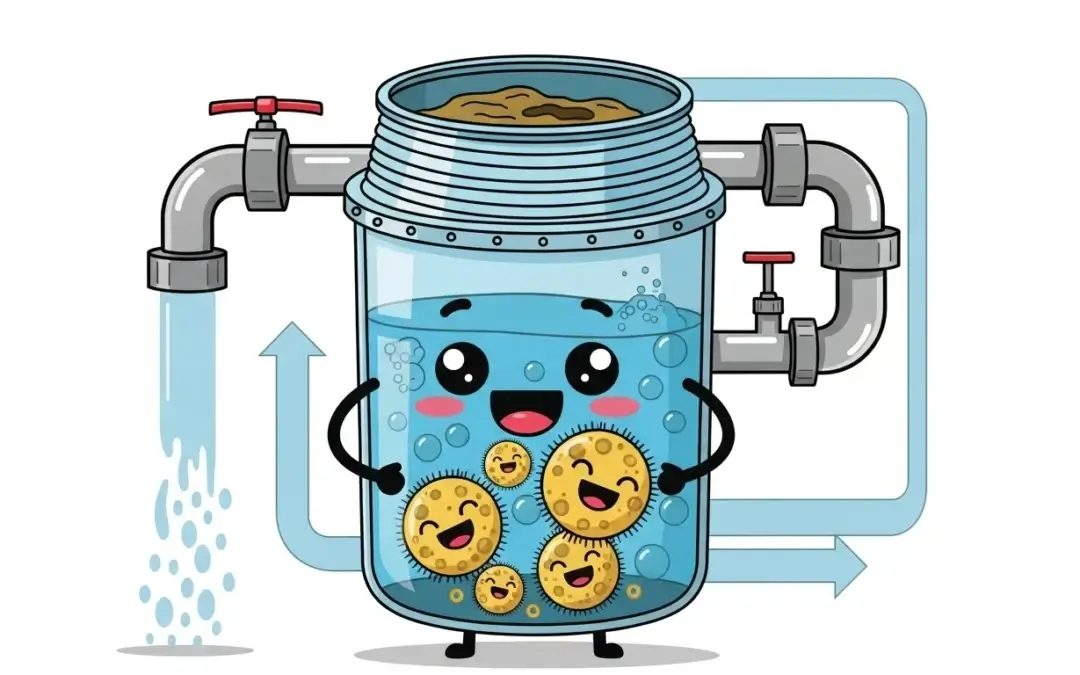Yeast in Septic Tank Treatment
Boosting Your Septic System Naturally
A properly functioning septic system is fundamental for effective wastewater treatment and disposal. While regular professional maintenance is paramount, many homeowners explore DIY septic tank treatments to enhance their system’s performance. Among the most discussed natural methods is adding yeast to a septic tank. But does this age-old remedy genuinely contribute to septic tank health?
At 907 Heating and Plumbing, we’ve serviced hundreds of septic systems. This guide combines scientific facts with our field experience to help you make informed decisions about yeast treatments.
Key Takeaways
- ✓ Yeast stimulates natural bacteria but isn’t a substitute for professional maintenance
- ✓ Monthly treatments can help reduce sludge and odors
- ✓ Proper application is crucial – wrong types of yeast can be ineffective
- ✓ Always monitor your system for signs that require professional attention
The Science Behind Yeast in Septic Systems
Yeast (Saccharomyces cerevisiae) interacts with your septic tank’s ecosystem in several beneficial ways:
Bacterial Stimulation
Feeds anaerobic bacteria that break down waste, increasing their activity by up to 30% according to wastewater studies.
Waste Breakdown
Produces enzymes that help decompose toilet paper, food particles, and organic matter more efficiently.
Odor Control
Reduces hydrogen sulfide production (the cause of rotten egg smells) by promoting complete decomposition.
Microbiology Insight
Yeast works synergistically with cellulolytic bacteria (like Bacteroides and Clostridium) that break down cellulose in toilet paper. This partnership is why yeast is particularly effective for residential septic systems.
Step-by-Step Yeast Treatment Guide
Selecting the Right Yeast
Use active dry yeast (baker’s yeast) or brewer’s yeast. Check the expiration date to ensure viability.
✓ Recommended
- Fleischmann’s Active Dry Yeast
- Red Star Active Dry Yeast
- Brewer’s yeast (health food stores)
✗ Avoid
- Instant yeast (contains additives)
- Nutritional yeast (inactive)
- Yeast with flavorings
Preparing the Mixture
The optimal activation formula for septic treatment:
Pro Tip: Let the mixture proof for 15-20 minutes until frothy. This ensures the yeast is active before introduction to your system.
Application Method
For optimal distribution in your septic tank:
Best Time
Evening after peak water usage
Frequency
Monthly maintenance
Location
Toilet closest to tank
Important: Flush twice after pouring to ensure the mixture reaches the tank. Avoid using sinks as the P-trap may retain the solution.
Key Benefits of Yeast Treatment
Cost Effective
At under $1 per treatment, yeast is 10-20x cheaper than commercial additives while providing comparable benefits for routine maintenance.
Eco-Friendly
100% biodegradable with no synthetic chemicals that could harm groundwater or disrupt local ecosystems like some commercial treatments.
System Longevity
Regular use can extend time between pumpings by 10-15% by reducing sludge accumulation, potentially saving hundreds in maintenance costs.
Professional Advice from 907 Heating & Plumbing
“While yeast treatments can be beneficial, we’ve seen many homeowners make critical mistakes. The most common is neglecting professional maintenance while relying solely on yeast. No DIY treatment can replace regular inspections and pumping every 3-5 years.”
When to Call Professionals Immediately:
Slow Drains
Multiple fixtures draining slowly simultaneously
Sewage Odors
Persistent smells inside or outside home
Pooling Water
Wet spots or lush grass over drain field
Frequently Asked Questions
A Balanced Approach to Septic Maintenance
Incorporating yeast treatments into your septic maintenance routine can be an effective, eco-friendly way to support your system’s natural processes. When used correctly and consistently, it may help reduce odors, slow sludge accumulation, and maintain healthy bacterial levels between professional service visits.
Remember the 3 Pillars of Septic Health:
Regular DIY Maintenance
(like yeast treatments)
Professional Pumping
Every 3-5 Years
Responsible Water Use
and Waste Disposal

